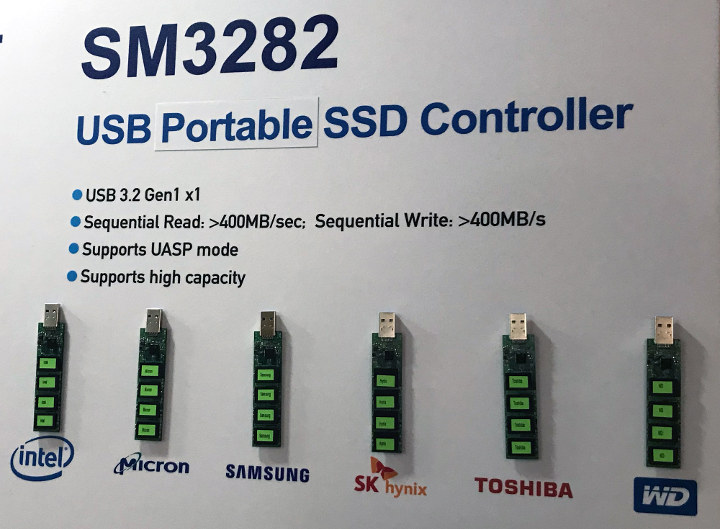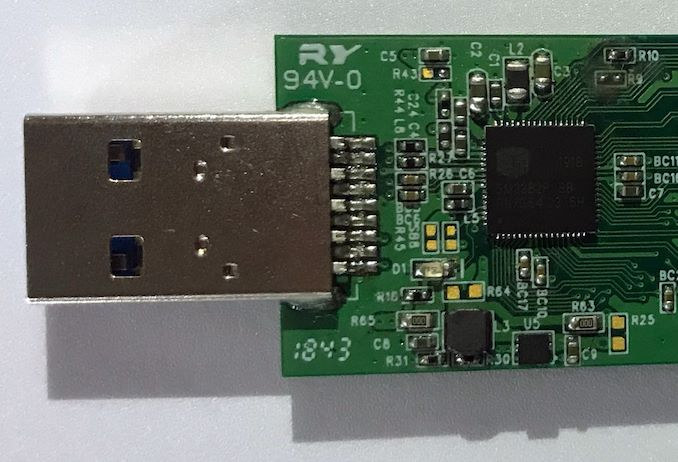Portable USB SSD drives are nothing new, but they are usually implemented using a stand-alone SSD with its own SSD controller combined with a USB to SATA or PCIe bridge chip in order to interface the SSD drive with the host computer or board.
Silicon Motion has recently unveiled SM3282 SSD controller that also comes with an on-chip USB 3.2 Gen 1 interface providing a complete single-chip hardware and software solution for portable USB SSD sticks. This should enable smaller and cheaper USB SSD drives.
Some of the key features of the SM3282 controller include:
- Peak sequential read and write transfer speeds of over 400MB/sec
- Supports USB 3.2 Gen 1 type A and type C
- Crystal-less design for bill-of-materials cost savings
- Built-in 3.3V/2.5V/1.8V/1.2V voltage regulators
- Supports LED for indicating access status
- 68-pin QFN package
- Compatible with Windows 10, Mac OS 10.x and Linux kernel v2.4 and greater
The chip also supports the USB Attached SCSI Protocol (UASP) and 2 NAND channels with 4 CE (Chip Enables) per channel, enabling up to two terabytes of storage with the latest generation of 96-layer QLC NAND.

The company showcased its new USD SSD controller at Computex 2019, and Anandtech had the opportunity to visit their booth and take a few photos. We can see several prototypes of longish USB SSD sticks based on Intel, Micron, Samsung, SK Hynix, Toshiba, and Western Digitial NAND flash devices.
Silicon Motion SM3282 will be sampling to their customers later this month (June 2019), so we can expect commercial drives in a few quarters.

Jean-Luc started CNX Software in 2010 as a part-time endeavor, before quitting his job as a software engineering manager, and starting to write daily news, and reviews full time later in 2011.
Support CNX Software! Donate via cryptocurrencies, become a Patron on Patreon, or purchase goods on Amazon or Aliexpress





